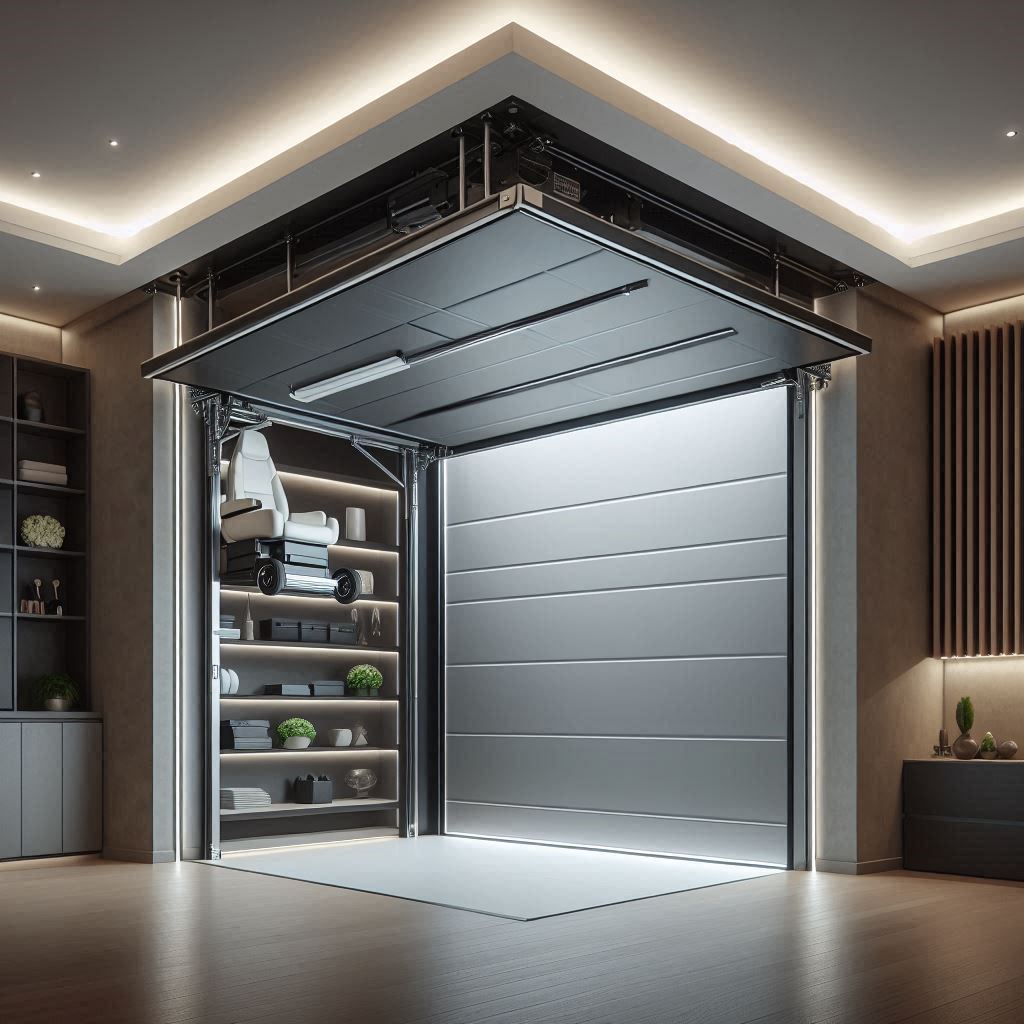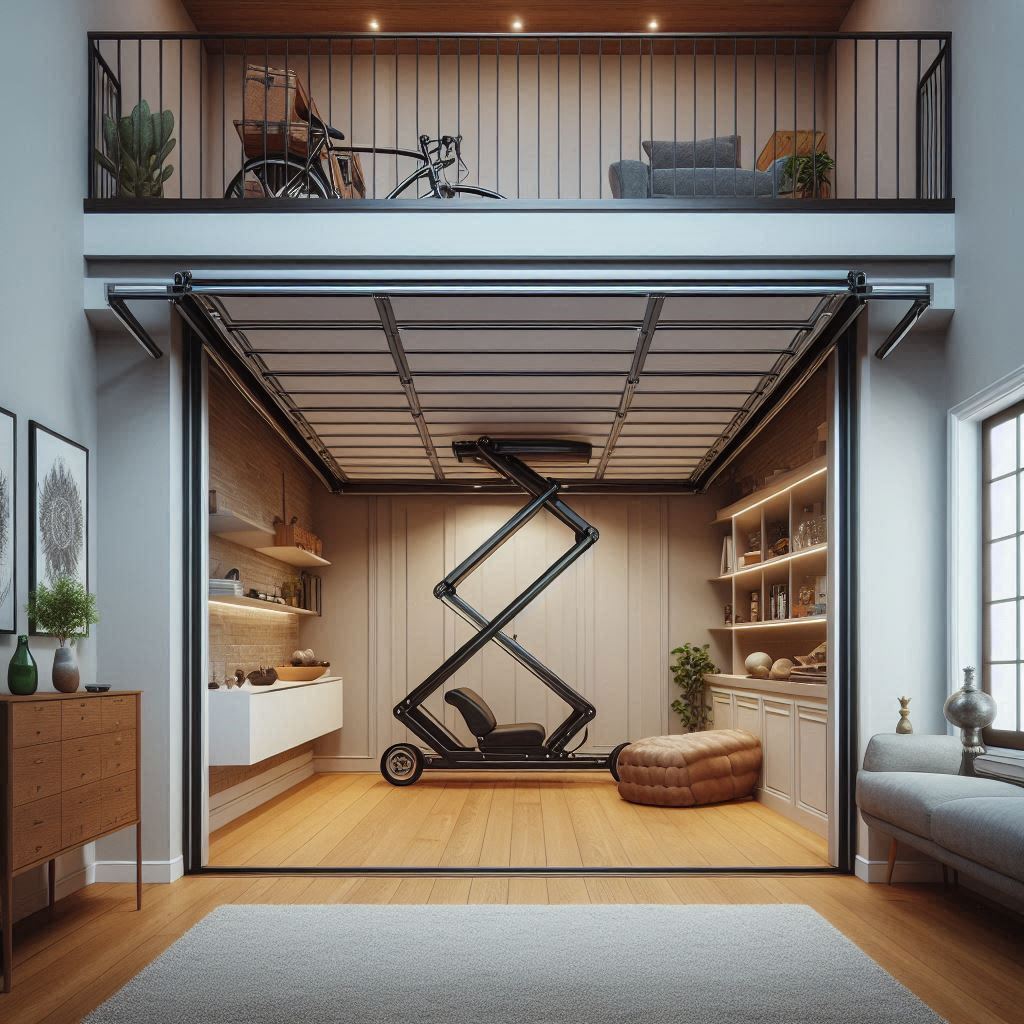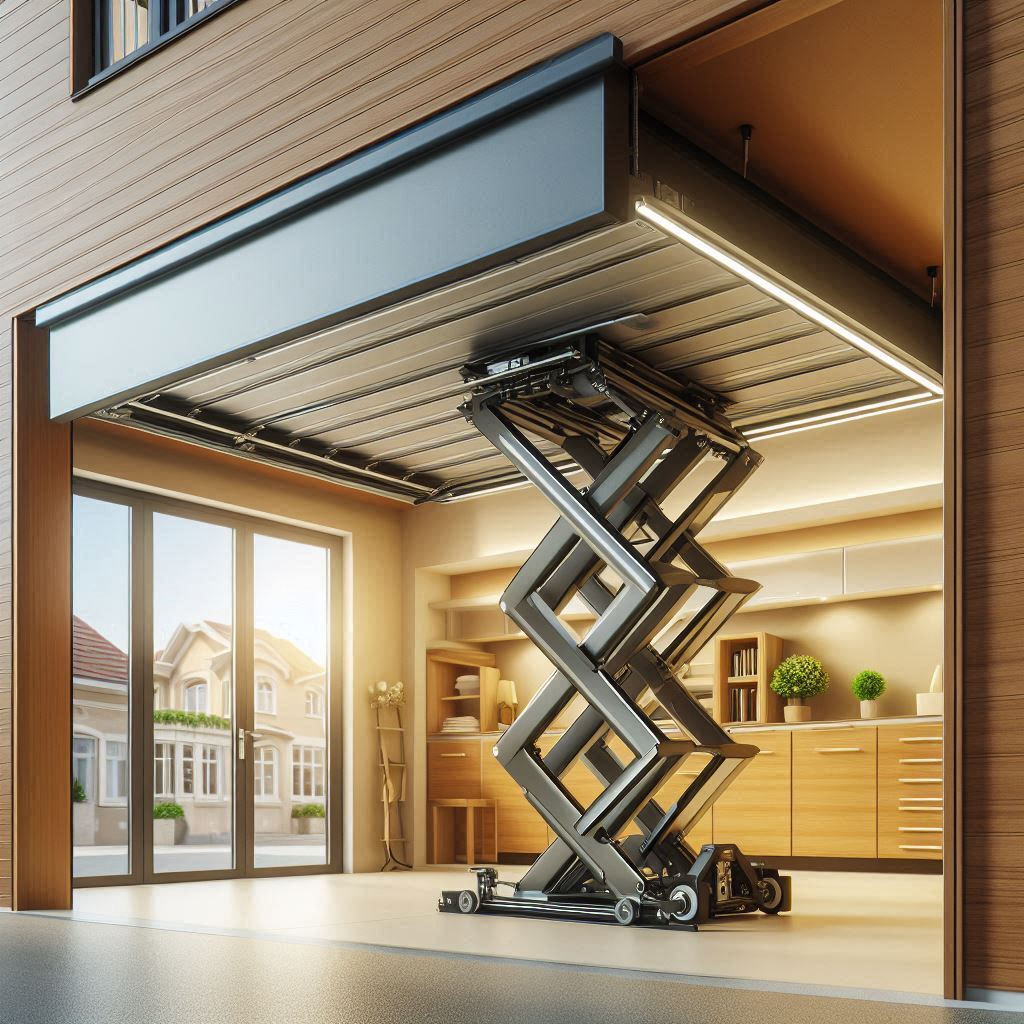
A high lift garage door is a type of garage door that opens higher than the usual ones. Instead of stopping close to the ceiling, it moves up more vertically before curving back. This kind of door is great if you have a tall garage and need more space for things like bigger vehicles or storage.
What’s the difference between a high lift and a standard garage door?

A regular garage door opens just a bit below the ceiling, while a high lift door goes up higher before it moves back. The tracks are longer, and the springs are adjusted to handle that extra lift. This design helps you use more of the vertical space in your garage, especially if you have tall ceilings.
Answer from Experience:
Speaking from experience, switching to a high lift garage door made a huge difference for me. I had extra ceiling space in my garage, but the standard door always seemed to waste it.
With the high lift setup, I was able to fit in taller storage shelves and even park a bigger vehicle without worrying about clearance. The installation was straightforward, but you need to make sure everything is measured and balanced properly for smooth operation.
5 Types of Garage Door Lifts

There are five main types of garage door lifts, each tailored to fit specific garage layouts. The standard lift is the most common option and is typically used in garages with normal ceiling heights. This type of lift operates by allowing the door to move along horizontal tracks that curve upward and run parallel to the ceiling. It’s efficient for most residential garages and provides a good balance of functionality and space.
The high lift garage door system is designed for garages with higher ceilings. Unlike the standard lift, the high lift allows the door to rise vertically for a longer distance before it curves back toward the ceiling. This setup provides extra headroom, making it ideal for garages that need more overhead space for larger vehicles or additional storage.
A vertical lift garage door is typically used in industrial settings or garages with very tall ceilings. Unlike the high lift, a vertical lift door moves straight up along vertical tracks without curving back. This setup maximizes the use of vertical space and is often preferred in commercial garages or warehouses where maximizing storage or clearance is essential.
For garages with limited space above the door, the low headroom lift is the best option. This type of lift uses a specialized track system that allows the door to open in tight spaces where a standard or high lift wouldn’t fit. It’s particularly useful in garages with low ceilings or when other obstructions, such as beams or pipes, prevent the use of traditional lift systems.
Finally, the follow-the-roof lift is a unique system designed for garages with sloped ceilings. The door tracks are angled to follow the pitch of the roof, allowing the door to open smoothly while maximizing the available space. This lift type is great for garages built into spaces with unusual architectural designs or non-traditional roof lines.
How to calculate high lift on a garage door?

Calculating the high lift for a garage door involves understanding the garage’s dimensions and how much vertical lift is possible before the door curves back toward the ceiling. To begin, measure the height of the garage door, which is the distance from the floor to the top of the door.
Next, measure the ceiling height by checking the distance from the garage floor to the ceiling. The difference between the ceiling height and the door height is the available space above the door.
To calculate the actual high lift, subtract about 12 inches from the available space for the door hardware and track system. The remaining distance is how much additional vertical lift your door can have.
Keep in mind that high lift systems require longer vertical tracks and adjusted springs to handle the extra movement. Once you have these measurements, you can determine how much lift your door can achieve, ensuring it maximizes space while operating smoothly.
Conclusion
A high lift garage door is a specialized system designed to maximize the vertical space in garages with taller ceilings. Unlike standard doors that curve back almost immediately, a high lift door rises vertically for a greater distance before curving along the ceiling, making it ideal for those needing extra overhead space for larger vehicles, storage, or even car lifts.
This system offers practical benefits for both residential and commercial garages, optimizing functionality and making the most of available vertical room.
FAQs
Q1. What is the main benefit of a high lift garage door?
A1. The main benefit of a high lift garage door is that it maximizes vertical space in your garage. This extra height is perfect for taller vehicles, installing car lifts, or adding overhead storage, especially in garages with higher ceilings.
Q2. Can I convert my standard garage door to a high lift system?
It is possible to convert a standard garage door to a high lift system. However, it involves replacing the existing tracks and springs, so it’s best to consult with a professional to ensure the conversion is done safely and correctly.
Q3. How much ceiling height do I need for a high lift garage door?
A3. To install a high lift garage door, you’ll typically need at least 12 to 15 inches of additional space above the door beyond the normal track height. The exact height depends on the size of the door and the desired lift.
Q4. Is a high lift garage door more expensive than a standard one?
A4. high lift garage doors are generally more expensive due to the specialized tracks, springs, and installation process. However, the added functionality and space-saving benefits can make the investment worth it for many homeowners.
Q5. Can I install a high lift garage door myself?
A5. Installing a high lift garage door requires precise measurements, adjustments to the spring system, and track installation. It’s recommended to hire a professional, as improper installation can lead to safety hazards and operational issues.
